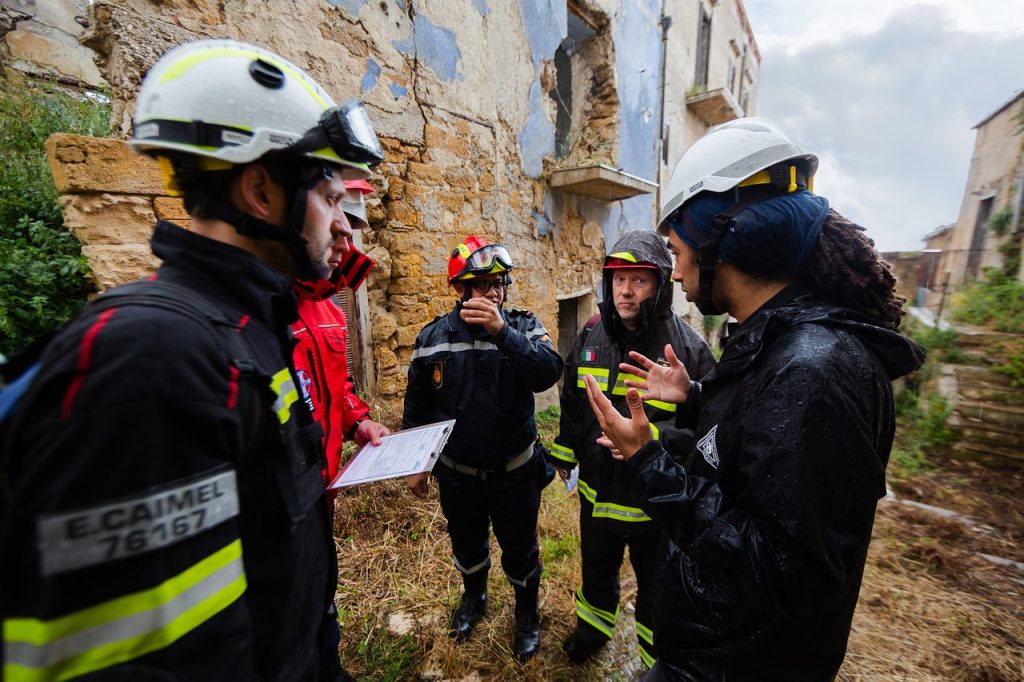Civil Engineering Assignment Help UK – Ultimate, Trusted, Proven, Essential Guide
If you want calm, accurate and deadline-safe civil engineering assignment help UK, this comprehensive playbook shows you exactly how to plan, brief, calculate, reference and present work that markers can navigate quickly and grade with confidence. You will scope tasks clearly, apply relevant standards, justify assumptions, and deliver a polished submission that reflects your own understanding.

Introduction: what great civil engineering assignments demonstrate
High-scoring work in the UK makes the engineering logic easy to follow. The best submissions show a clean chain from problem framing to standards selection, model choice, calculation steps, results, checks and conclusion. Used correctly, civil engineering assignment help UK is a structured learning aid that helps you evidence professional judgement—without outsourcing authorship.
- Relevance: every section serves the stated aim.
- Transparency: inputs, assumptions and methods are visible and justified.
- Compliance: appropriate UK or European standards are cited and applied consistently.
- Verification: hand checks, sensitivity or alternative methods support credibility.
- Presentation: drawings are readable; tables and figures are numbered and captioned; units are consistent.
Throughout this guide, we use civil engineering assignment help UK to describe an ethical, study-safe process: you remain the author; experts help you plan, structure, check and present work clearly.
How UK examiners mark civil engineering assignments
Rubrics vary by institution, yet most assess the same pillars. Align your draft to them from day one; well-briefed civil engineering assignment help UK will mirror these criteria.
- Problem framing (10–20%) — aims, scope, context, constraints.
- Method selection (20–30%) — standards/code compliance, model choice, assumptions.
- Analysis & calculations (25–35%) — correctness, clarity, checking, traceability.
- Design outputs (10–20%) — drawings, tables, charts, BIM extracts, schedules.
- Evaluation & judgement (10–20%) — options compared, sensitivity, risks, buildability.
- Communication & referencing (5–10%) — organisation, figures, citations, UK English.
Create a table with one column per pillar and a final column titled “Evidence in my submission”. As you draft—or when you order civil engineering assignment help UK—populate that column with page/figure references to prove coverage.
Scoping: turn a vague brief into a testable plan
Before any modelling, translate the brief into a checklist the marker will recognise. This is where civil engineering assignment help UK saves the most time.
Scope in three moves
- Context: site, use, lifetime, constraints (e.g., flood zone, brownfield, heritage).
- Deliverables: drawings, calculations, design report, risk register, method statement.
- Success criteria: serviceability, ultimate limit states, environmental compliance, budget, programme.
Define interfaces
- Disciplines: structural ↔ geotechnical ↔ drainage ↔ traffic ↔ construction management.
- Dependencies: survey accuracy, ground investigation, traffic counts, utility maps.
- Assumptions: where data are missing, state provisional values and how you will check them.
Documenting scope like this makes civil engineering assignment help UK predictable and easy to assess.
Typical modules covered by civil engineering assignment help UK
Ethical civil engineering assignment help UK supports you across core modules while keeping authorship and integrity intact.
- Structural engineering: beams, slabs, frames, stability, steel/concrete/timber design.
- Geotechnics: soil classification, bearing capacity, settlement, earthworks, slopes.
- Hydraulics & water: open channel flow, pipe networks, stormwater, wastewater, treatment.
- Transportation: geometric design, capacity analysis, signal timing, pavement design.
- Construction management: WBS, sequencing, cost, risk, H&S/CDM.
- Environmental engineering: EIAs, carbon, noise, waste, permitting.
- Surveying & GIS: setting-out, control, digital mapping.
- Project & dissertation: research methods, data analysis, reporting.
Standards, codes and guidance (BS/EN, DMRB, CDM)
Markers look for standards awareness. The right code must be selected and applied correctly; civil engineering assignment help UK should make that choice explicit.
- Eurocodes (EN 199x) with UK NA: structural basis, steel (EC3), concrete (EC2), timber (EC5), geotechnical (EC7), seismic (EC8).
- DMRB (Design Manual for Roads and Bridges): highway geometry, structures, drainage, pavement—see National Highways DMRB.
- CDM 2015: roles, risk and documentation—see the HSE CDM guidance.
- CIRIA guides: SuDS, scour, geotechnical risk—see CIRIA.
- Institutional guidance: professional context—see the Institution of Civil Engineers (ICE) and the Engineering Council.
When you order civil engineering assignment help UK, provide the exact edition or chapter your lecturer expects. If in doubt, cite the standard in-line and in references, and quote the clause used.
Structural analysis & design essentials
Many tasks ask you to justify member sizes, reinforcement or connections. Ethical civil engineering assignment help UK makes the reasoning visible.
Analysis choices
- Hand methods: influence lines, moment distribution, virtual work—great for checking.
- Computer models: matrices/FEM for frames and plates; document loads, combinations, boundary conditions.
- Robustness: sensitivity to support conditions, stiffness, connection assumptions.
Design checks
- Steel (EC3): axial, bending, shear, buckling, lateral torsional buckling; connections to Green Book guidance where relevant.
- Concrete (EC2): ULS/SLS, shear punching, crack widths, anchorage, durability class, cover.
- Timber (EC5): service class, k-factors, connections, fire performance basics.
Presenting results
- Table load cases, combinations and partial factors.
- Show a single worked example step-by-step; put repetitive member checks in an appendix.
- Include a short narrative: “Member X governs due to LTB; alternative bracing reduces weight by 8%.”
Geotechnical design: soils, foundations and slopes
Ground risk sinks projects. High-quality civil engineering assignment help UK makes ground assumptions explicit and defensible.
Data and classification
- Summarise boreholes, SPT/CPT, Atterberg limits, moisture, unit weight.
- Classify soils (e.g., BS 5930) and note variability.
Foundations
- Shallow: bearing capacity (characteristic vs design), settlement (immediate/consolidation), eccentricity.
- Deep: pile capacity (shaft/end), group effects, negative skin friction; serviceability settlements.
Slopes & earthworks
- Stability methods (limit equilibrium numerical factors of safety); groundwater and drainage sensitivity.
- Temporary works principles: excavation support, basal heave checks, surcharge effects.
Your civil engineering assignment help UK brief should include any ground model or GI logs provided by your module.
Water, wastewater & environmental engineering
Stormwater, foul networks, and treatment tasks favour clarity and compliance. Strong civil engineering assignment help UK outputs keep calculations auditable.
Hydraulics basics
- Open channel flow (Manning’s), specific energy, culvert capacity, headloss components.
- Pressurised flow (Hazen–Williams/Darcy–Weisbach), pump curves, NPSH checks.
Urban drainage
- Greenfield/brownfield runoff rates; attenuation and SuDS selection (basins, permeable paving, bioretention).
- Network design: pipe diameters, gradients, self-cleansing velocities, surcharge limits.
Wastewater & treatment
- Load estimation (PE, BOD, COD), primary/secondary processes, sludge handling.
- Environmental compliance: discharge consents; refer to UK EA guidance where relevant.
Transport engineering & traffic analysis
Transport assignments test your ability to model demand, capacity and safety. Use civil engineering assignment help UK to structure inputs, assumptions and outputs cleanly.
Core elements
- Geometry: horizontal/vertical alignment, sight distance, superelevation (DMRB).
- Capacity: junction analysis, saturation flows, signal timing, queuing models.
- Pavement: layer design, materials, drainage, maintenance planning.
Presenting transport results
- Provide input tables; show key formulae once; include sensitivity to demand growth.
- Conclude with safety and accessibility notes, not just capacity.
Construction management, cost & risk
Assignments often test whether you can plan safe, economical delivery. High-quality civil engineering assignment help UK addresses buildability, logistics and risk explicitly.
Plan and cost
- Work breakdown structure, critical path, resource levelling.
- Bottom-up cost with allowances; contingency rationale; inflation and risk.
Health & safety
- CDM roles and responsibilities; key residual risks; method statements for higher-risk activities.
- Logistics and temporary works coordination; site constraints and welfare.
Software stack: AutoCAD, Revit, STAAD.Pro, ANSYS, MATLAB
Use software to accelerate, not to hide logic. Ethical civil engineering assignment help UK includes model screenshots, inputs, and checks.
- AutoCAD/Revit: layers, scales, sheets, tags, schedules, export settings.
- STAAD/ANSYS: element choice, mesh density, supports, load cases; compare to hand checks.
- MATLAB/Python: parameterised calculations and plots; include well-commented code.
- GIS/QGIS: base mapping, catchments, constraints, overlays for planning context.
Always include a “software and verification” note in your appendix when submitting or commissioning civil engineering assignment help UK.
Show your calculations: clarity, units and checking
Markers award for traceable maths. Your civil engineering assignment help UK should standardise presentation.
Calculation style guide
- State aim at the top of each calc page; list knowns with units; list assumptions with justification.
- Write each equation, substitute values, show units; keep significant figures sensible.
- Round at the end, not mid-calc; sanity-check magnitudes (“does this deflection make sense?”).
- Add a one-line conclusion under each calc: “Beam B2 OK in shear at ULS (VEd < VRd)”.
Drawings and BIM: clarity, layers, annotation
Clear drawings reduce marking friction. Effective civil engineering assignment help UK respects drawing conventions.
- Use consistent title blocks, north arrows, scales, and revision codes.
- Layer discipline: STR for structure, DRN for drainage, RD for road; keep annotation legible at print scale.
- Dimension sensibly: centres, edges, fall gradients; avoid clutter; cross-reference details.
- Include a general notes box with standards and material specs referenced.
Data collection, assumptions, and uncertainty
Where data are incomplete, good engineers state uncertainty and manage it. Well-briefed civil engineering assignment help UK includes a small risk register.
- Sources: surveys, GI logs, as-built drawings, traffic counts, rainfall records.
- Gaps: provisional soil parameters, missing utility depths, outdated traffic growth assumptions.
- Mitigation: sensitivity checks, conservative design, recommended investigations.
Quality assurance and version control
Quality is process, not luck. Build light QA into your civil engineering assignment help UK routine.
- Structure pass: do all sections satisfy the brief and rubric?
- Technical pass: independent hand check on one critical element.
- Presentation pass: tables/figures/drawings labelled and referenced in text.
- References pass: citations consistent with Harvard/APA/IEEE as required.
- Final proof: UK English, units, consistency; export to PDF, check pagination.
Use simple versioning: CE3204_Assignment_A_2025-02-14_v03.docx and keep an audit trail of changes.
Academic integrity, ethics and safe use of help
Civil engineering assignment help UK must be study-safe. You remain the author; support helps you learn and present clearly.
- Use model solutions and exemplars as references only; never submit third-party text as your own.
- Maintain drafts, notes, GI summaries and calculation sheets that evidence your process.
- Cite standards and sources; quote clauses accurately; paraphrase responsibly.
- For integrity principles, see the QAA Academic Integrity Charter.
If you commission civil engineering assignment help UK, request transparent change-tracking and a short alignment note explaining choices, limits and checks.
Briefing template for civil engineering assignment help UK
Copy, adjust and paste into your order or planning document. Precise briefs reduce cost and rework.
Module: CE3XX Structural Design (EC2/EC3) — Level 6 Task: Design and justify a steel portal frame for a single-storey warehouse. Deliverables: Brief report (2,500 words), calculations, drawings (GA + 3 details), connection sketch, materials schedule. Standards: EN 1993-1-1 with UK NA; wind to EN 1991; fire overview. Inputs provided: Site plan, basic wind speed, terrain category, imposed loads. Assumptions allowed: Soil bearing capacity (state adopted value), portal spacing (state rationale). Success criteria: ULS/SLS pass; member weight minimised; deflection/serviceability limits; buildability notes. Deadline: [date/time]; Milestones: outline (3 days), partial calc pack (7 days), final (10 days). Referencing style: Harvard; include standards and clauses; list software used and checks performed. Voice & tone: concise, UK English; first person plural acceptable in methods.
Our recommended workflow from enquiry to final proof
Whether you work independently or seek civil engineering assignment help UK, this workflow keeps delivery calm.
- Clarify: restate the brief in your own words; confirm standards; list deliverables.
- Outline: headings, tables and figures to be included; allocate word counts.
- Data: gather inputs; list assumptions and planned checks.
- Analysis: run core calcs; capture screenshots; document methods.
- Design: size members and components; iterate for efficiency.
- Drawings: produce readable GA and details; annotation and cross-referencing.
- Evaluation: option comparison, sensitivity, risk, buildability.
- Compile: write report; insert tables/figures; format references.
- QA: run the five-pass quality routine.
- Export & proof: final PDF check; submit on time.
Realistic timelines & milestones
Plan backwards; leave white space for QA. For larger tasks, request staged civil engineering assignment help UK with midpoint checks.
Example 10-day plan (2,000–3,000 words + drawings)
- Day 1: scope & outline; confirm code clauses.
- Day 2–3: data & baseline calcs; define assumptions.
- Day 4: complete calcs; start drawings.
- Day 5: draft results tables; write methods.
- Day 6: evaluation & options; finish drawings.
- Day 7: draft report complete; references tidy.
- Day 8: QA passes; fix issues.
- Day 9: proof & export.
- Day 10: buffer for unforeseen issues.
Mini case studies
Case A — Steel frame weight reduced, clarity improved
Problem: over-conservative section sizes; unclear load combinations. Intervention: apply EN 1991 combinations correctly; check LTB; add bracing. Outcome: 12% weight reduction; faster marking due to neat tables and one worked example. The student used civil engineering assignment help UK for a structure pass then implemented the changes personally.
Case B — Drainage redesign aligns with SuDS
Problem: undersized attenuation; non-compliant exceedance. Intervention: SuDS hierarchy; bioretention added; exceedance mapped. Outcome: compliant discharge and clearer plan/section drawings with SuDS notes. The civil engineering assignment help UK focused on strategy and a clean calculation pack the student could present.
Case C — Geotechnical settlement risk surfaced early
Problem: shallow pad foundation chosen on poor soils. Intervention: settlement calculations and variability; advise pads on improved ground vs. piles. Outcome: options appraisal included cost and programme; marker praised judgement and risk visibility.
FAQs
Is civil engineering assignment help UK allowed?
Yes—when used as learning support. You remain the author; support helps you plan, check and present work. Keep drafts and cite sources to protect integrity.
Will you use the right standards and clauses?
Ethical civil engineering assignment help UK identifies the correct standard, cites clauses, and explains how they are applied. You should include the edition or NA required by your course.
Can I request software-ready models and hand checks?
Yes. Good support includes readable hand checks and model notes/screenshots so your assessor can verify inputs and assumptions.
How do you manage urgent deadlines?
By splitting deliverables into outline → partial calcs/drawings → final. Even under time pressure, the QA pass is non-negotiable.
What referencing style should I use?
Follow your module (often Harvard/APA/IEEE). Reference standards and guidance properly and include stable links where allowed.
Helpful internal and external resources
Use these links to plan calmly, commission safely and cite correctly. Internal links also explain how we structure ethical civil engineering assignment help UK support.
Internal resources
- How It Works — transparent milestones and deliverables.
- Order Form — share your brief, deadline and standards.
- Affordable Proofreading Services UK — final polish for grammar, consistency and references.
- Civil Engineering Project Support — for larger, staged deliverables.
External authoritative resources
Executive summary
The fastest route to credible marks is a calm, auditable workflow that any assessor can follow. Start by translating the brief into a specific plan: frame context and constraints, list deliverables, and define success criteria in practical terms. Decide early which standards apply—Eurocodes with UK National Annex for structures, DMRB for highways, CDM for safety duties—and cite relevant clauses. Ethical civil engineering assignment help UK exists to reinforce this discipline while you retain authorship.
Next, build an outline that maps directly to your marking rubric. Use headings that mirror the task (e.g., “Load Cases and Combinations per EN 1991”, “Portal Frame Design to EN 1993”, “Serviceability Deflection Checks”, “Connection Detailing”, “Buildability and Risk”). Under each heading, list the figure/table you will provide. When you start calculations, adopt a standard presentation: aims and knowns at the top, assumptions with rationale, equations with substitutions and units, and a one-line conclusion per check. Keep significant figures appropriate and round at the end. Provide one fully worked example in the main body and put repetitive member checks in an appendix.
Use software to accelerate the work, not to obscure the logic. Show model assumptions, loads, supports and combinations with screenshots and short notes; pair numerical results with hand checks where feasible. In parallel, produce readable drawings: consistent layers, clear annotation, correct scales and cross-referenced details. Add a general notes box that cites standards and material specifications to demonstrate professional context.
Geotechnical, water and transport modules benefit from the same orderliness: summarise GI data and classify soils; calculate bearing capacity and settlement with variability in mind; check slope stability and temporary works; design drainage using the SuDS hierarchy and self-cleansing rules; present transport geometry, capacity and safety together with sensitivity to demand changes. Construction management tasks should show a defensible programme, a structured cost estimate, and a short risk register aligned with CDM duties.
Quality assurance is your final multiplier. Run five quick passes before submission: structural (does every section do its job?), technical (independent check on one critical element), presentation (figures and tables labelled and referenced), references (style accuracy and complete citations), and a UK-English proofread. Export to PDF and check pagination, image quality and cross-references. If you seek civil engineering assignment help UK, request staged deliverables (outline → partial pack → final) and change-tracked files so learning and authorship remain obvious.
Integrity is non-negotiable: keep drafts and notes to evidence your process; cite standards and sources; paraphrase responsibly. The goal is not to “game” the mark but to present a safe, efficient and professionally reasoned solution. Follow this playbook and your submission will showcase what examiners value most—transparent decisions, compliant calculations, readable drawings, realistic buildability and clear communication—while fitting the expectations of UK civil engineering education.










